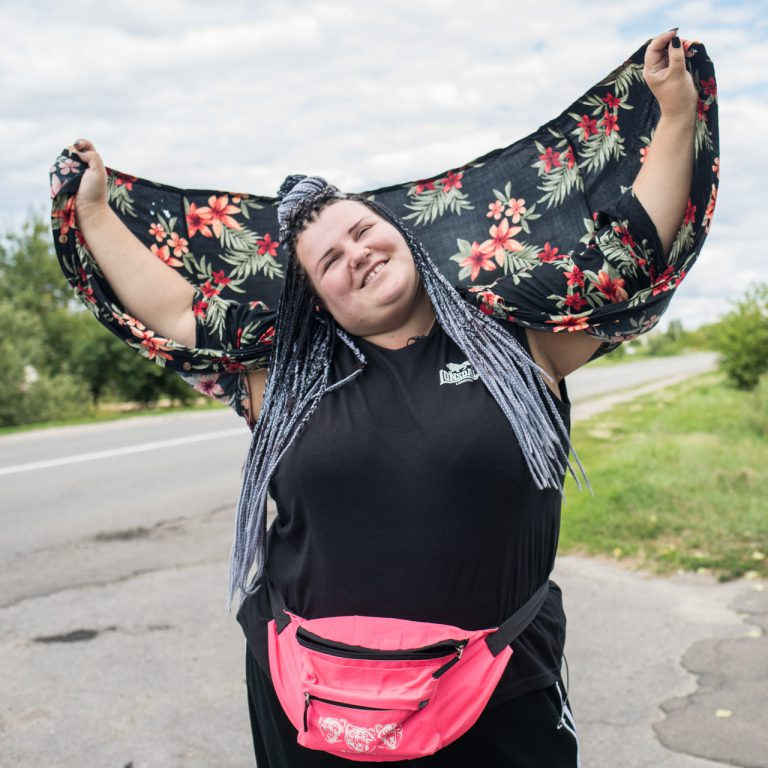We are launching a new series, to tell the stories of famous Ukrainians and their hometowns: familiar places seen through the eyes of extraordinary people, offering a fresh perspective on Ukraine.
In our first story, rapper Alyona Alyona takes us to two places that are important to her – Baryshivka and Pereyaslav-Khmelnytskyi. Pereyaslav is known as a city of museums, and Baryshivka District Court has become famous for all the wrong reasons, but we’ll be looking at these places from a less familiar angle. Our heroine will be exploring Baryshivka and Pereyaslav with the founder of the Ukraїner project, Bogdan Logvynenko.
— Is there a culture of rap in Baryshivka?
— I’m sure there is, to some extent. The same as everywhere. But I don’t know, for some reason they aren’t all in groups, like in most of Ukraine — they don’t form groups. In my time, when I started rapping, it was here in Baryshivka that all the subcultures were united in one big team. Just getting together, playing rock music on guitars, and doing whatever we wanted. Everyone was so interesting and different, and that was the whole point. But as time went by, people moved away, settled down with families, and all of that disappeared. It didn’t last.
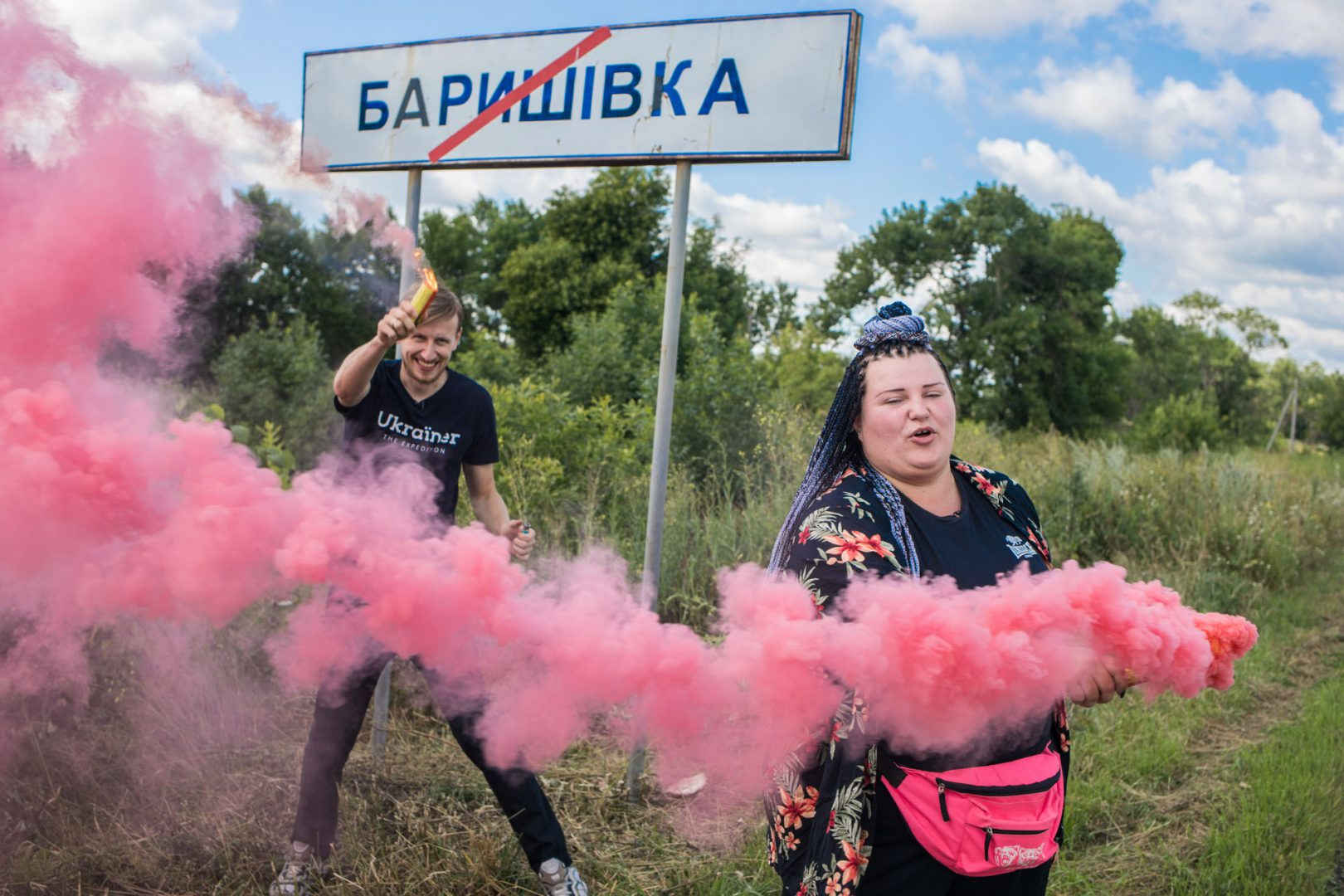
— So we’re in Baryshivka because you’ve spent quite a lot of time here.
— The past 15 years I’ve spent in Baryshivka, sure. Most of my closest friends are here, and my relatives too. And the place itself — we’ve made more than one video here.
— More than one?
— More than one. We shot “Open” here. Well, part of it — one part was shot in Kyiv, and the other here. We used my local canteen as a backdrop — in the Sofiivskyi neighbourhood. In fact, Baryshivka is a very symbolic place, because it was here that I got my first pseudonym. I won’t say it — we won’t say it out loud!
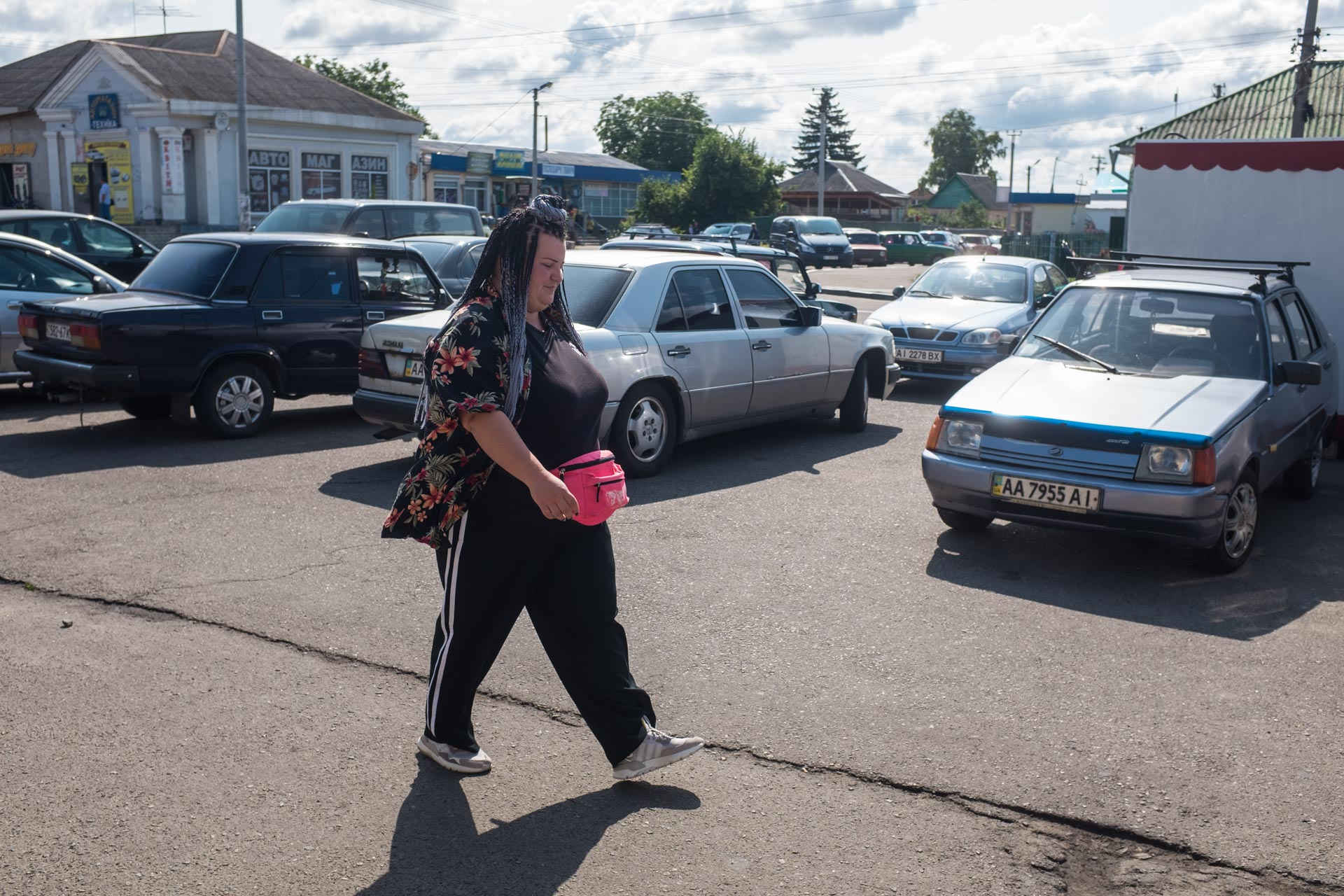
Al.kaida
Alyona Alyona’s first pseudonym
— Do you remember your first impression of Baryshivka, when you first came here?
— Yes, honestly, I remember it well. Why? Because I came here from Kirovohrad region. You should understand, the landscape is different, there isn’t so much asphalt there. The young people are very different, they behave differently. Here you feel more free, there’s a little more alcohol… there, it was a bit different. I was so shy and I spoke a mix of Ukrainian and Russian. Everyone felt it, heard it and kept talking about it. But I liked how they had a great subculture movement here and I got into it almost immediately, and I just was enjoying it, because I had like-minded people. It was awesome. We used to hang around in my neighborhood, mostly on this abandoned building site. We came to escape school problems, our parents, or just to sit and listen to some beats, but times are changing… I’m so happy that my town is getting bigger — it’s nice to watch. We had a performance in Baryshivka for the Ivana Kupala holiday and I came with my Kyiv team. There’s a new skate park, and they were like, “Wow — there’s a skate park in Baryshivka?” and I was like “Yeah”, and it was so symbolic for them. Damn, a skate park — how cool is that? You have that in the capital — you’ve been to Europe, you’ve seen things, you know, and they have their life here. You can come here, and it’s so calm — that’s what I really like. It’s great to see that things are happening here, changing.
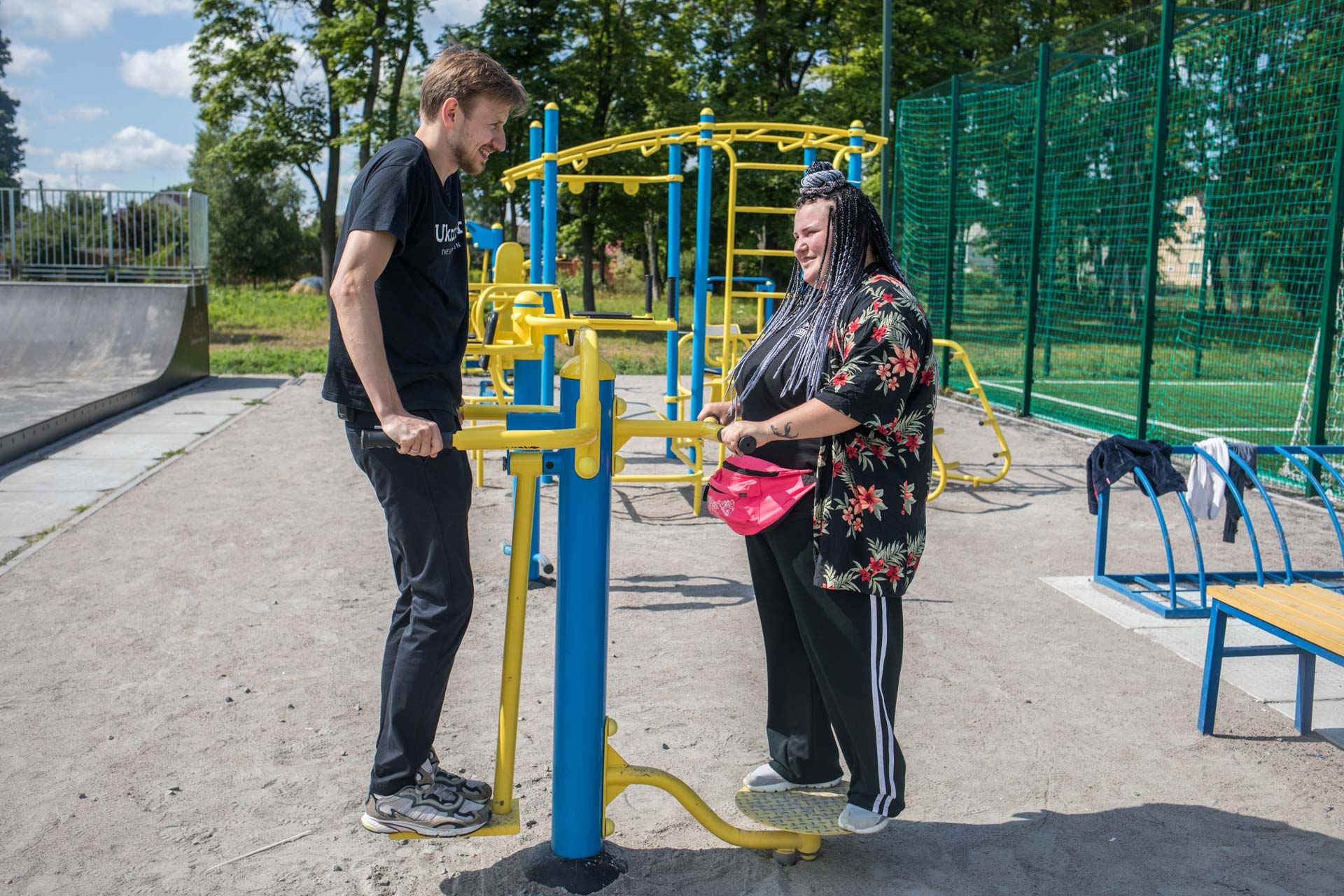
The skate park is in Lypnyanskyi Park, in the centre of Baryshivka. There’s also a playground, an open-air workout spot, a mini football pitch with astroturf and outdoor exercise machines.
— I’m very happy that my city has facilities like this skate park, and a lot of new fitness equipment, and the football pitch. This park is symbolic for me too, because living on a kindergarten teacher’s wage wasn’t so much fun, so I had a side job as a photographer. I started learning photography and I did my first photoshoot here in this park. It was an autumn photoshoot, so the place was really wild, but the leaves and bushes had been cleared, and there was a space to come here and take pictures of girls playing with the leaves. I brought a blanket, tea cups and a thermos. I did a lot of photoshoots here. And even now this place is symbolic to me. When I see how the park is being developed, it’s great. It’s just amazing. Damn, it’s so cool!
— There are more and more places for Instagram photos.
— Yes — places for work. Because, you know, you have to come and prepare the backdrop yourself. There isn’t always have time to clean it up. That’s why I’m so happy about what’s going on now.
— What role did your environment play? How did you get to know about rap culture in the first place?
— You know, one of the best things about this town is that it isn’t far from Kyiv. So we’d go to Petrivka market, and there were CDs. You’d just go and ask, “What rap do you have?” And back in my youth, there was “Snickers Urbania” — these youth culture festivals that were fun to go to, to watch people doing skateboard tricks, and as we were having fun, we tried to get to know each other — like “Oh my god, look, it’s a rapper.” — “Hi!” and it was kind of awkward, but we were doing our best. But anyway, given the size of the population, there were very few of these manifestations of creativity. I’ve been writing since the age of 12. Officially, my first rap texts were written when I was 12. I started rapping at 14, when I’d just arrived here, or at 15, when I met the girls who introduced me to the movement and there were boys who wanted to check me out, and I just had to start rapping somehow. And things just went from there.
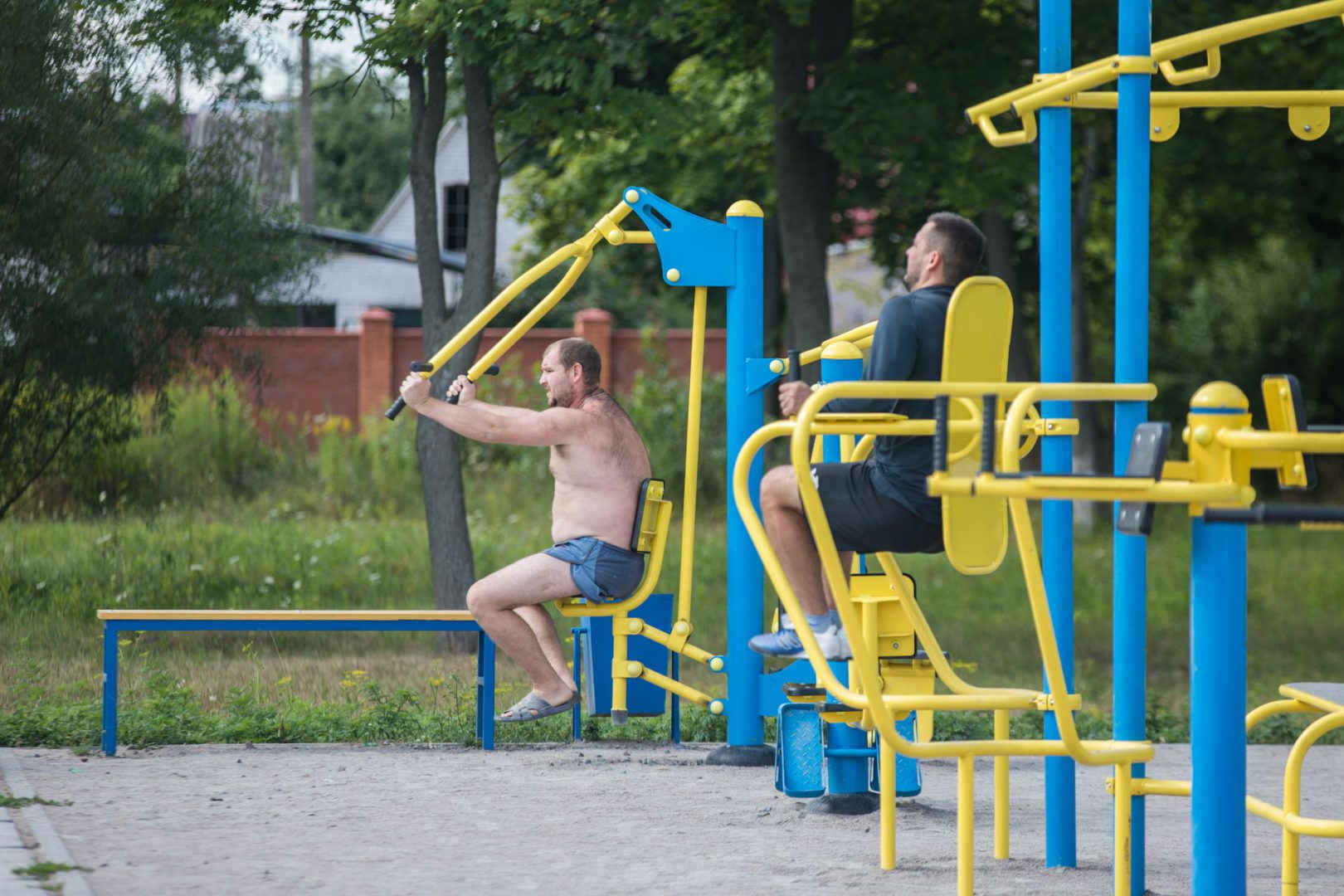
— Who inspired you? Because you’d still never been to Petrivka. You were living in Kapitanivka back then.
— Sure — I was inspired by Detsl (Russian rapper — tr.) — may he rest in peace. That’s where I got my first impulse to write. He had a new album out, and I’d just got it on tape. I was already into rap, but still not writing anything myself. And I heard this kid’s voice, and thought: wow, I could actually do that. That track — “Party at Detsl’s House” — wow. And I started writing. His music was so funny. I liked it because I’ve been bullied a lot in my life and had to deal with a lot of bad feelings. I didn’t want to feel sorry for myself — on the contrary, my first texts were pretty aggressive. Like — “life’s a b****” [laughing]. “Detsl’s having a party, the guys are on their way, they start going wild…” That’s what my first songs were like. It’s good that no one’s seen them!
Alyona Alyona was born in Kapitanivka, a small town in Kirovohrad region. While still a teenager, she moved with her parents to Baryshivka, not far from the capital. This move fuelled her developing creativity.
— I remember this one story — it’s a family story, my favourite. We were taking the metro to the zoo. I remember the escalator — my first ever steps on an escalator… We got on the train, and an Afro-American guy got on at the same time. And my mum realised what would happen next. I was like, “Mum…” and she immediately covered my mouth with her hand. She told me, “Honey, you can’t talk to a person like that…”. “Mum, look! He’s black! He has black skin!” Where could I have seen a black person before? Only in music videos, on TV. Where else? So that was my encounter with the wider world, me with my village mentality. I was saying hello to everyone on the metro. My mum had to explain to me: “Daughter, you know everyone in the village, and they know you. Everyone says hi to you because you’re our daughter, and you have to reply because they’re adults, but here they’re just strangers. You don’t have to say hello to them.”
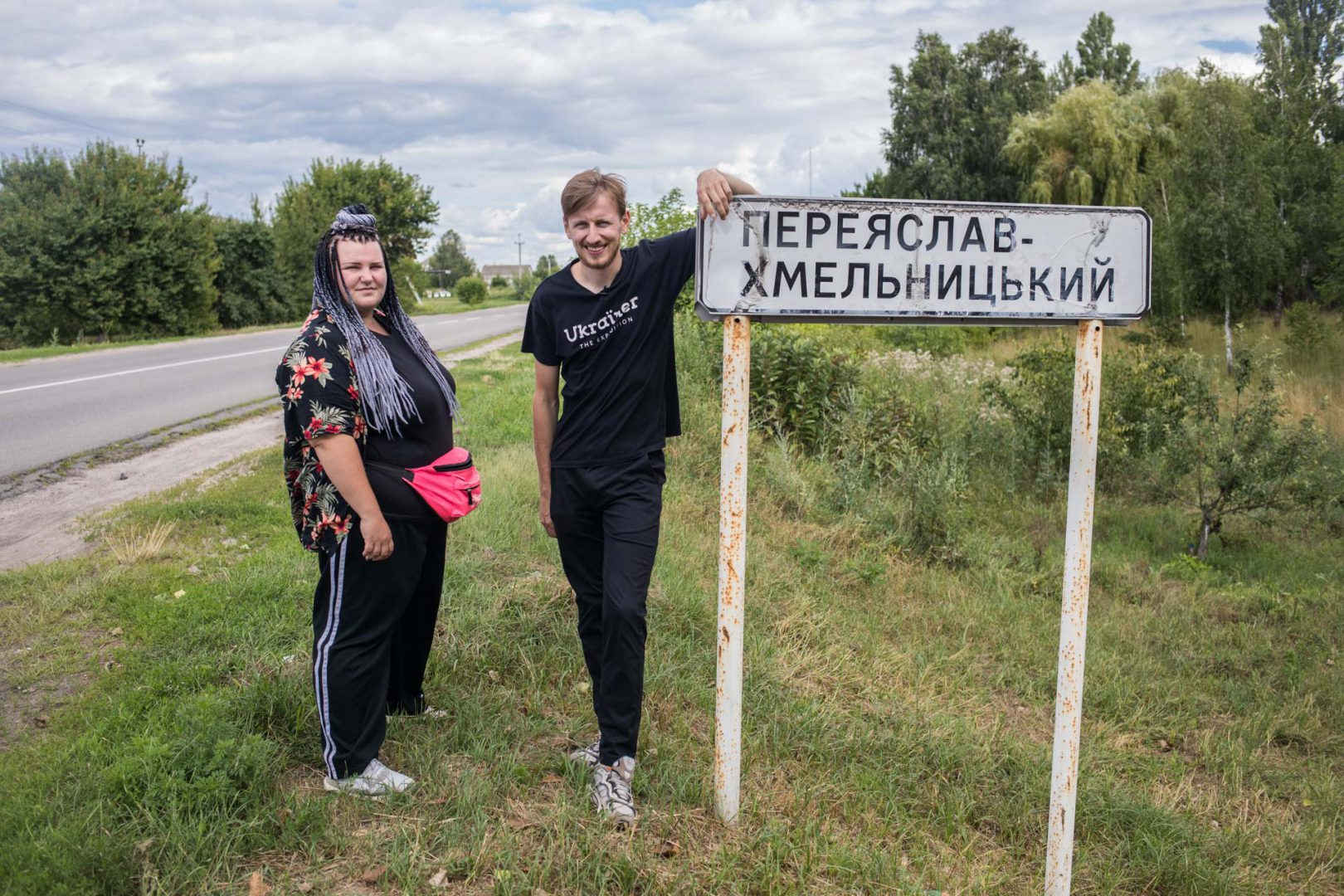
— We’re leaving Baryshivka and going to Pereyaslav. And Pereyaslav – is it the second of your three homes? Or are there four?
— Yes, it’s one of my homes, but I won’t call it a home in the sense of bricks and a roof. It’s more a spiritual nest, where I developed myself — my ‘I’, my skills and creativity, my skills as an artist. And it’s the kind of place where… I don’t know. Maybe some people miss school. I hardly miss school, but I miss university.
— Why did you choose to study in Pereyaslav?
— It was my childhood dream to become a psychologist. I really wanted to apply to somewhere in Kyiv back then. The nationwide school leavers’ exams had just been introduced, and there were entrance exams too — it wasn’t easy to get into university. Especially if you weren’t a local. So I didn’t even try for Kyiv. I was accepted here. They have a psychology faculty here. I don’t regret it. Great university. Thanks to Pereyaslav, I got to know the boys here too, who had already a recording studio. Yeah, it was only a microphone – a journalist’s wand. But it wasn’t in a cupboard. I never recorded in a cupboard. But the mic was made of this stuff — you know how home speakers have this layer of net stretched across them? It was basically like rapping into a speaker. I came to them and recorded my first tracks. I still didn’t have any like-minded friends. Then I had a creative hiatus. I started working in the kindergarten and forgot about rap, stopped even listening to beats. That was it. I started listening to completely different music and devoted all my free time to the kindergarten, but it builds up inside you, everything unsaid. Then I met this girl from Kherson. We were chatting on some social network and she convinced me to write a hit in Ukrainian. I was like, “why not?” As I sat down to write, my God, it was flowing like a song, flowing, flowing — you can’t imagine. Meanwhile, I’d already found a community where they rapped in Ukrainian. As it turns out, there’s a lot of rap in Ukrainian. And that was it, it just went from there. It was a real incentive for me, because people actually needed it, you know? And if someone needs it, that’s cool – I’ll do it. With age, I’ve come to realise that when you write just for the rhymes and put no energy into it, it sounds like nothing, and when you just pour it out of your soul, people feel it. There’s no fooling anyone.
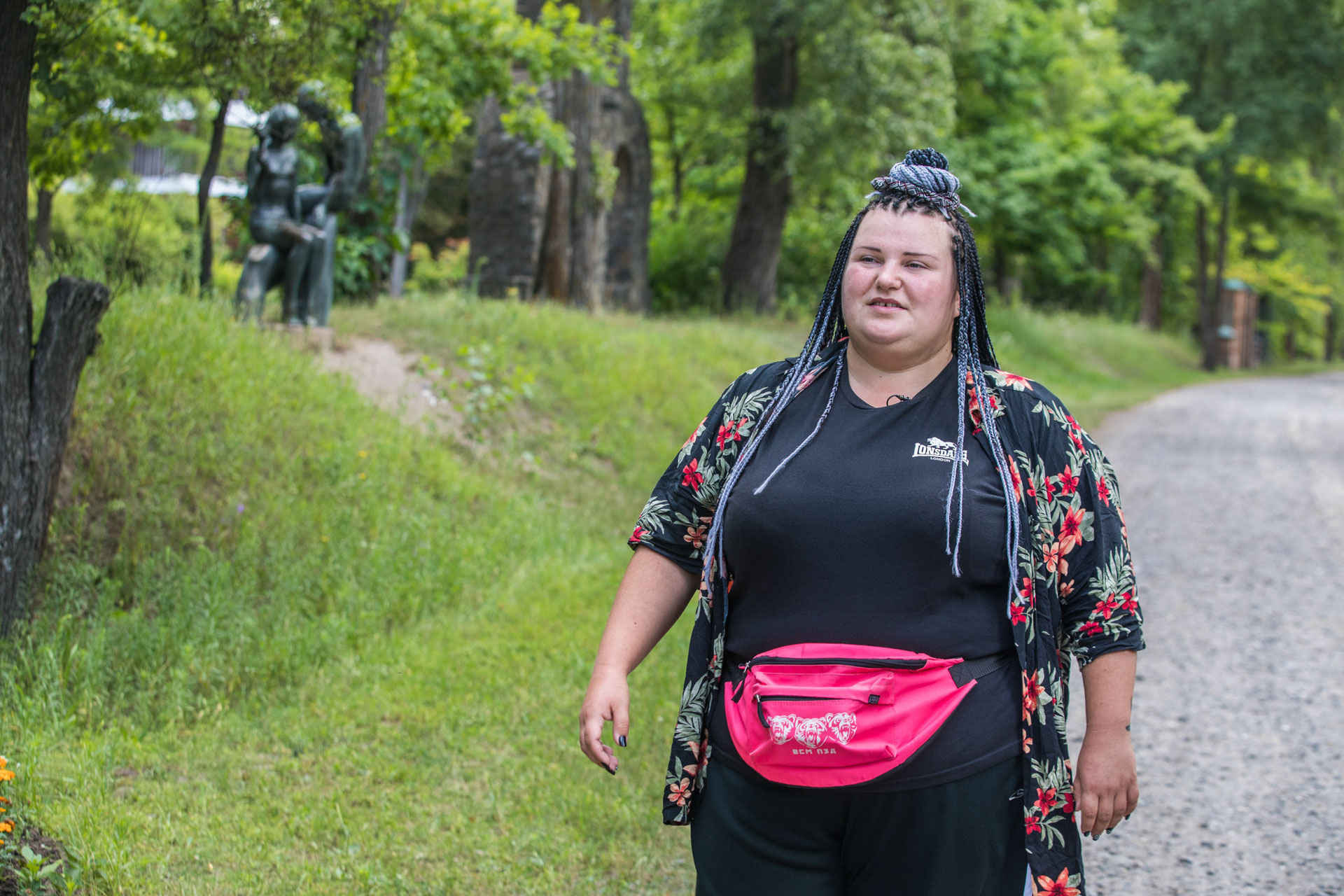
— It seems like a great time for rap right now. Don’t you feel there’s a lot of rap around right now?
— Yeah.
— But we have hardly any Ukrainian rap.
— But I’m already so happy that people are interested in it. Everyone says there’s no Ukrainian rap. Well, there is, but it’s still not on the same level. I’m trying to give everyone advice, share things, collaborate, listen to what people send me. I give my own frank opinion. I give support, I wish everyone happiness and health.
— Basically, you’ve become the mother of Ukrainian rap.
— Well, maybe, kind of. That’s how it’s turned out. But I didn’t give myself that name [laughing].
— It’s cool that you’ve become something of a public diplomat for Ukraine abroad, since lots of your videos are being talked about and watched in other countries.
— I’m not a public diplomat yet, but a musical one.
— Well, yeah. But before, you could literally count them on the fingers of one hand: DakhaBrakha, Onuka, and…
— Jamala. If I get the honour and the opportunity to travel somewhere in Europe, and if I don’t lose that opportunity, I’ll gladly show myself, tell people about us, invite them to visit. You know, even if the music still isn’t perfect, is still so rough and unpolished — as long as it’s got soul, and a rocking vibe, you’ll hear it. Even on a bad demo. Even when some girl comes out and starts strumming her guitar.
— But sometimes, that roughness is what makes it rock, and really lets you feel the music.
— Yes, 100%. For me, a great example is Odyn v Kanoe. She didn’t need a perfect musical arrangement, she just went ahead and sang. I like that.
— Have you seen her in concert?
— No. I wanted to go twice, but both times I couldn’t go. It’s the same with DakhaBrakha — I’ve never seen them live. Every time they’re performing, I circle it in red, then I can’t make it — I get invited to play at another festival.
— Do you know them personally?
— Oh yeah, very well. They often come to my concerts. I really like that.
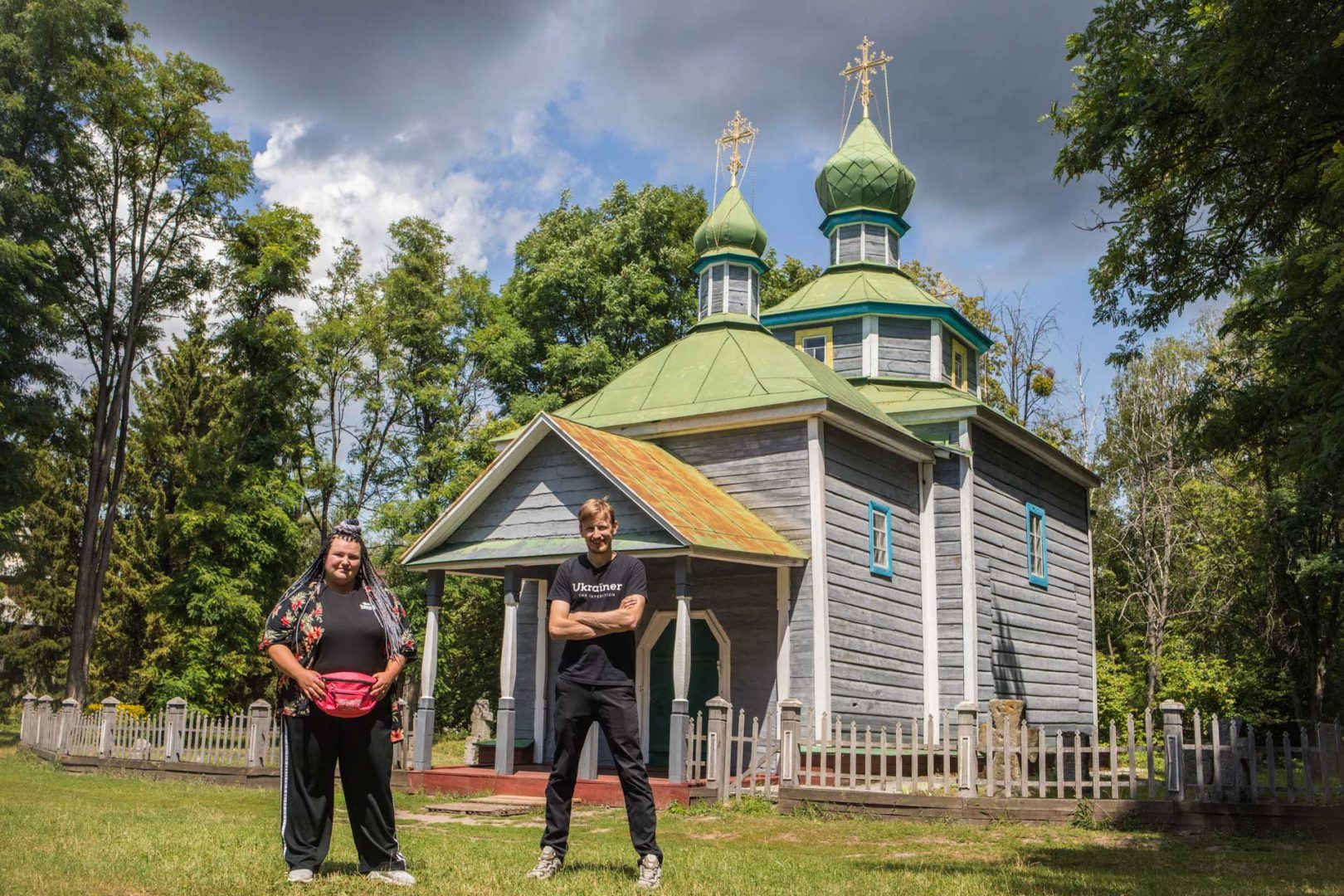
The next stop, on the outskirts of Pereyaslav-Khmelnytskyi, is the Central Naddniprianshchyna Museum of Folk Architecture and Life. The museum depicts everyday life in this particular region of Ukraine, from the Paleolithic Age to the present day.
— In fact, by exploring yourself and your history, you begin to understand where you got your love for others, where your family got its customs from. That kind of cultural self-identification really helps you to get to know yourself, move forwards, and do good things. What’s great about this place is that it’s not so crowded — you feel the space here. You’re walking, you can see things from far away, you can go closer. It’s important. You can just sit, breathe the fresh air. I remember when fitness bracelets came into fashion, the ones that count your steps. I honestly can’t remember the number of steps, but we’d been walking and walking, and then we looked at the bracelet, and saw we’d walked more than we normally do in three days, and we still hadn’t even seen everything. It was such a shock — like “Oh my God, how long do you have to camp here to see the whole museum, to understand it all?” I don’t know… You feel free here. It’s awesome. And beautiful.
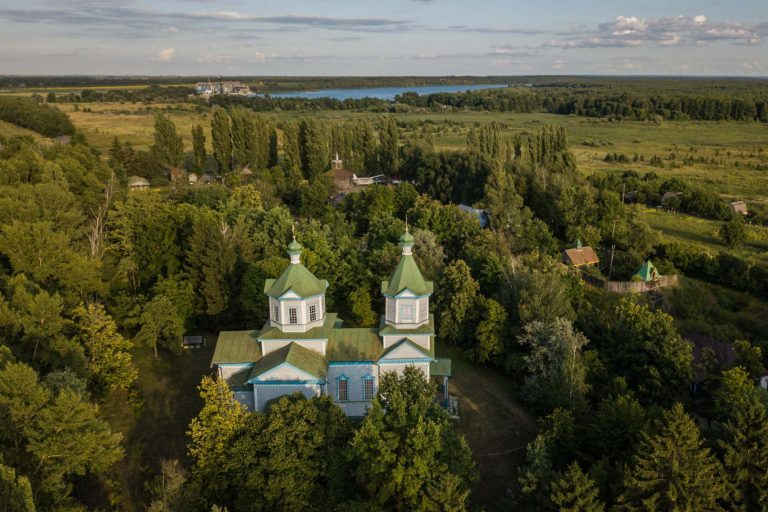
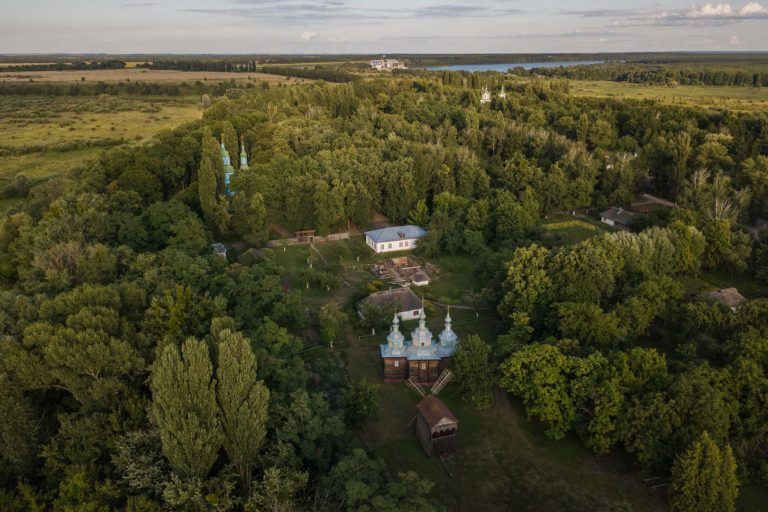
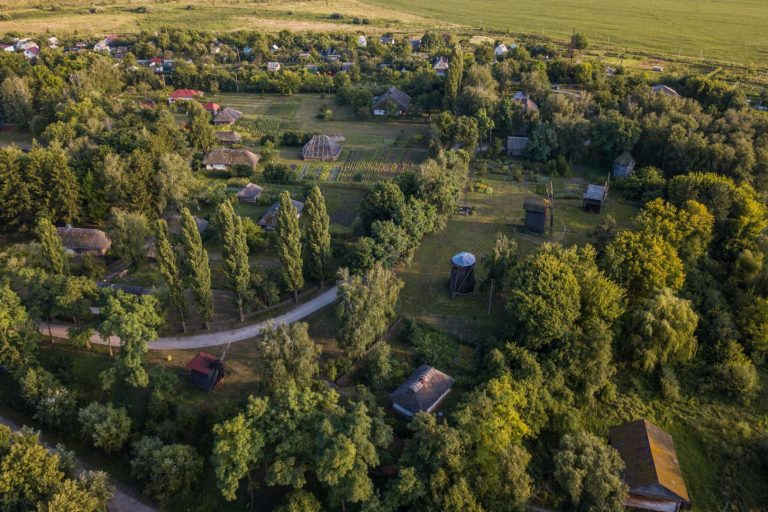
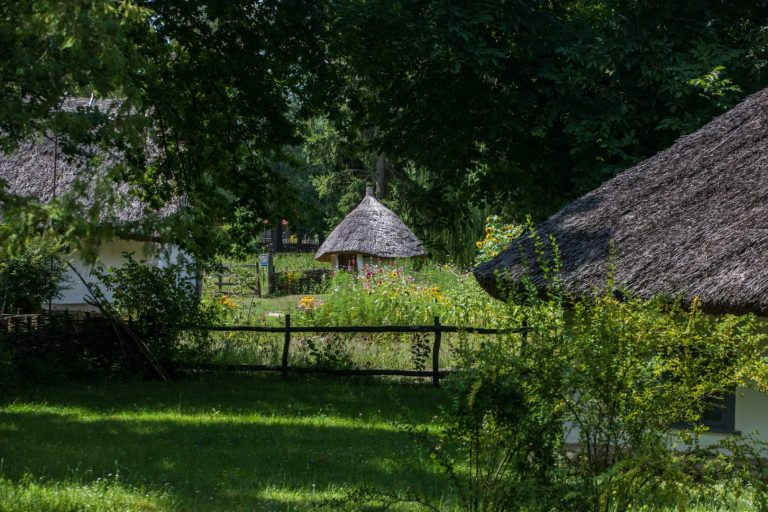
slideshow
— You say you last came here five years ago, right?
— Yeah, to this museum, no more than five years ago. We came here regularly. During my first year at university I used to bring my friends from Baryshivka, and then we kept coming back. It’s so cool when you have a family tradition of coming here, bringing your kids here every year. Just awesome. For kids it’s great — much better than sitting with a tablet. For educational and moral development, spiritual too. So cool.
One of the churches on the museum grounds is home to the Museum of Space. When visitors enter the Church of St Paraskeva, expecting to see a typical church interior, they come face to face with space suits and other gear used by cosmonauts in their ‘peaceful exploration of space’. There is also a Museum of Rushnyks (Ukrainian embroidered cloths – tr.) with a collection of over four hundred rushnyks, made using a variety of techniques.
— I love how, just like we all have our own dialects, we also have our own styles of painting, and rushnyks woven and embroidered in different ways. You have to remember your roots and know where you come from, and who you are, and what were the preconditions for the way we are now.
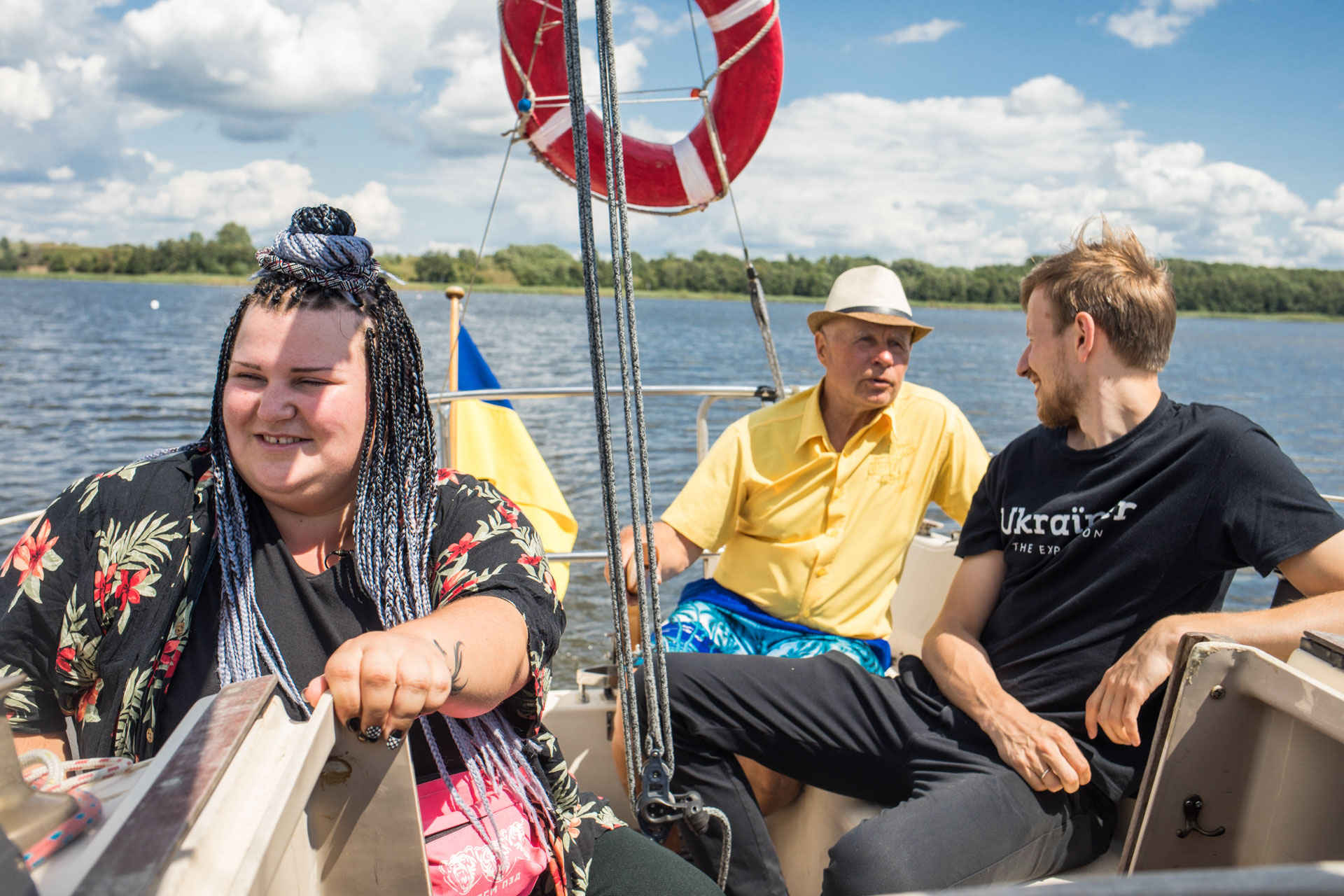
Despite the city’s wealth of tourist attractions, the outskirts of Pereyaslav remain unknown to the general public. On the left bank of the River Dnipro, in the southern part of the Kaniv Reservoir, is the Pereyaslav-Khmelnytskyi Cruising Yacht Club. It was founded in 1979 on the initiative of engineer Hryhoriy Horbachenko. Over the ensuing decades, the club established a tradition of sailing races, sometimes lasting over 24 hours, with up to 50 boats taking part. However, very few people know about it.
— Oh Lord, I’ve been battling on so long here in Pereyaslav, that it just amazes me. The Pereyaslav Cup will be held for the 29th time this year. All yachtsmen know about it, but the citizens of Pereyaslav don’t. Some people come, but I’d say it’s only those who know about the event. If you ask anyone else, they’ll go “What? Does such a thing exist?”
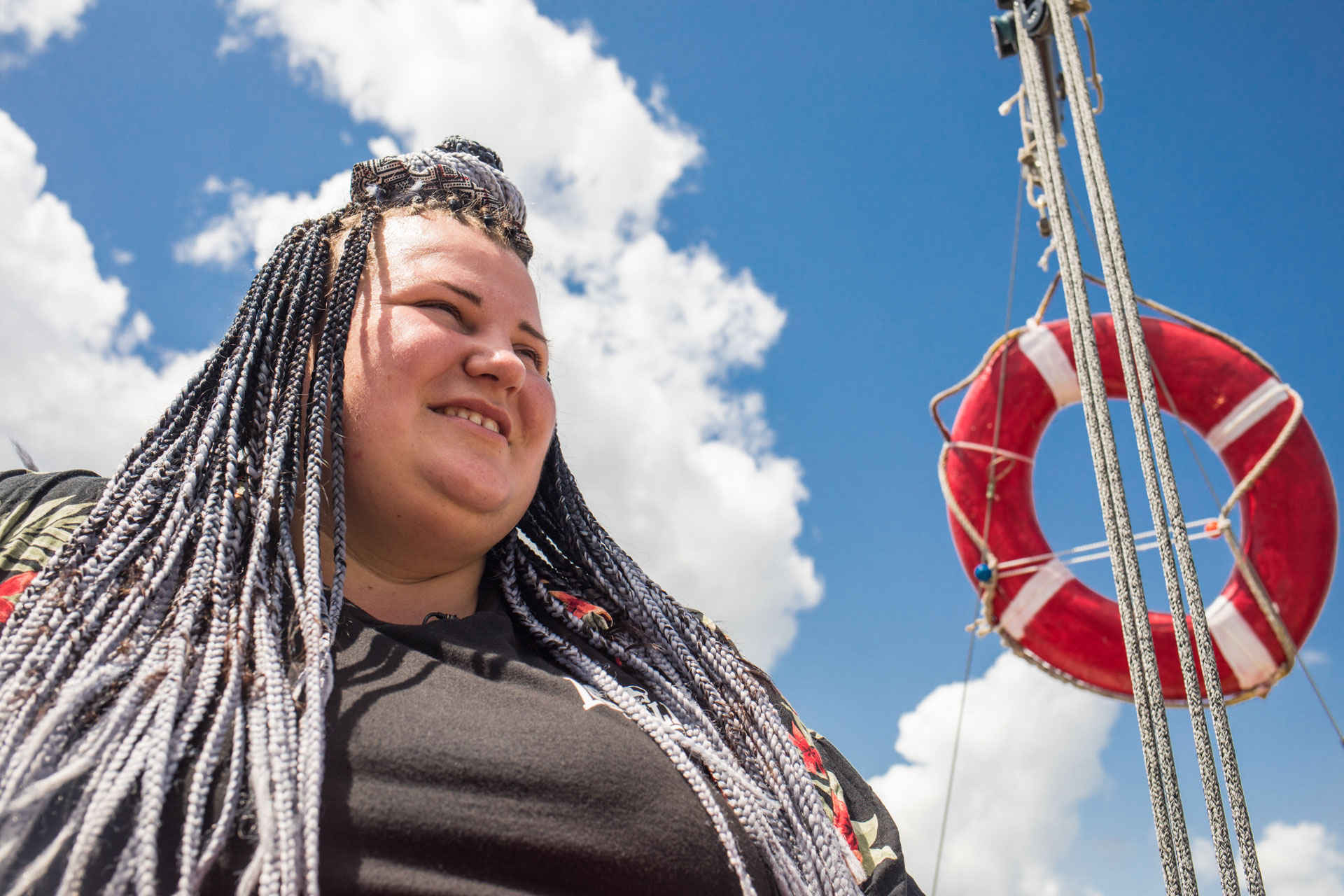
Alyona Alyona, like many other Ukrainian celebrities, is involved in volunteer work. In fact, Ukraїner also exists thanks to the support of volunteers and donors. Interestingly, Alyona started volunteering long before she became famous.
— How did you get into volunteering?
— Hmm… you’re digging really deep… I think it’s in my character to get involved in things, somewhere, everywhere. Keeping busy. It’s really helped me — I started volunteering when I was in Kirovohrad region. I remember handing out booklets, we were always busy doing something. Sending pictures to people, sharing toys. It must have started when I was still in school. I used to buy things at the Red Cross, and when I moved to Baryshivka, there was a full-on social programme. There were concerts where kids with disabilities performed. Anyway, there was a load of everything, and somehow — I don’t remember — I ended up at ‘Mriya’. They needed help with the kids, I got involved. We were packing things up, handing things out. Also, volunteering is really close to my heart because I have a lot of sympathy for people who need help. You see, even though I’m not in a wheelchair, I have my eyesight and everything, but I’ve always felt like an ugly duckling. The people around me made me feel that way, so helping others was really important to me. Because I never judged them. That was the way they were, and I accepted them. I wanted to do something for them, to make them happy.
— And this sympathy for animals — have you volunteered with animals too? Or are you planning to?
— No, not at all. I don’t have any experience of that. This will be my first time. When I got to a certain age, I realised I had this desire to help — to get involved, do something. I think that with age, people develop a maternal instinct. Basically, you start to love animals when you have some leftover bones at home, and then you have a pet, and… I lived apart from my parents, and started to take some of my food out to the animals. It’s so sad, you want to feed them, and then you realise there are so many of them, and they’re all hungry. OK, let’s go.
Tetiana Chebotar, head of the community organisation “U dobri ruky” (“In Good Hands”), enlisted the support of fellow dog lovers and volunteers; together, they set up a shelter providing post-operative rehabilitation for street dogs. After recovery, some dogs return to wherever they came from and some find new owners. Other dogs — usually those who narrowly escaped death — reside permanently at the shelter.
— Everyone’s been dreaming about an animal shelter. There’s absolutely no doubt that people here care about dogs. We’re dreaming about it too, because right now, with our dogs, there’s a high turnover. Lots have been adopted. In one year, we found homes for almost 100 puppies and adult dogs. Yes, it’s what we live for. Over there, we have a dog from the school — they called and asked us to take her away and put her down. Because she had sores — it was some kind of disease. On the day we picked them up, some kids came on a school trip from that same school, and they recognised her. We took her in to treat her, and she’s much better now, she doesn’t have those sores anymore.
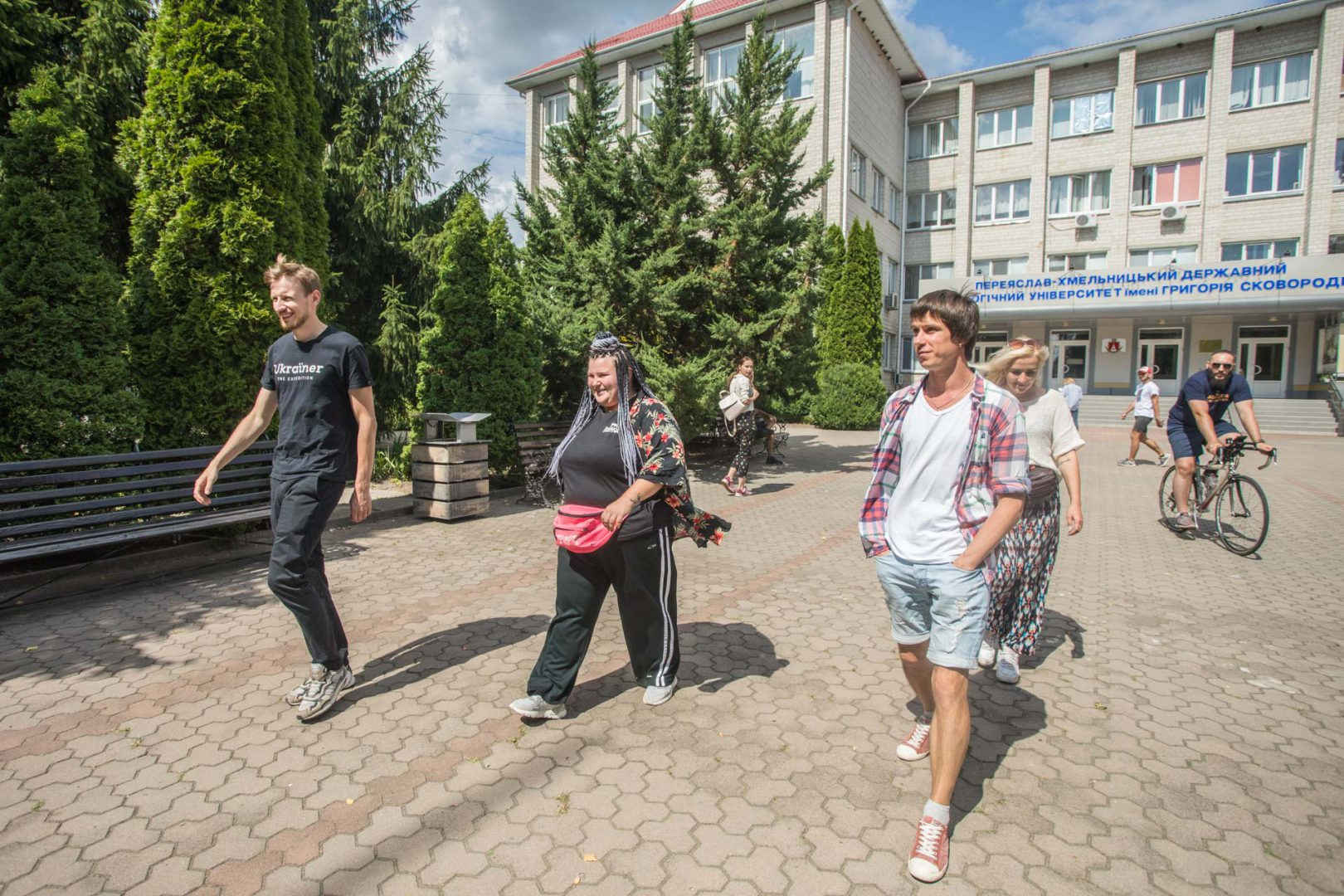
As the day drew to an end, Alyona introduced us to some of Pereyaslav’s community leaders: committed activists, who for several years have been leading socio-cultural projects with the local youth. One such group is the community organisation Jam Toloka, founded in 2013 by Ihor Yanchuk, which continues to provide support to those who love music, have interesting ideas, and cherish freedom.
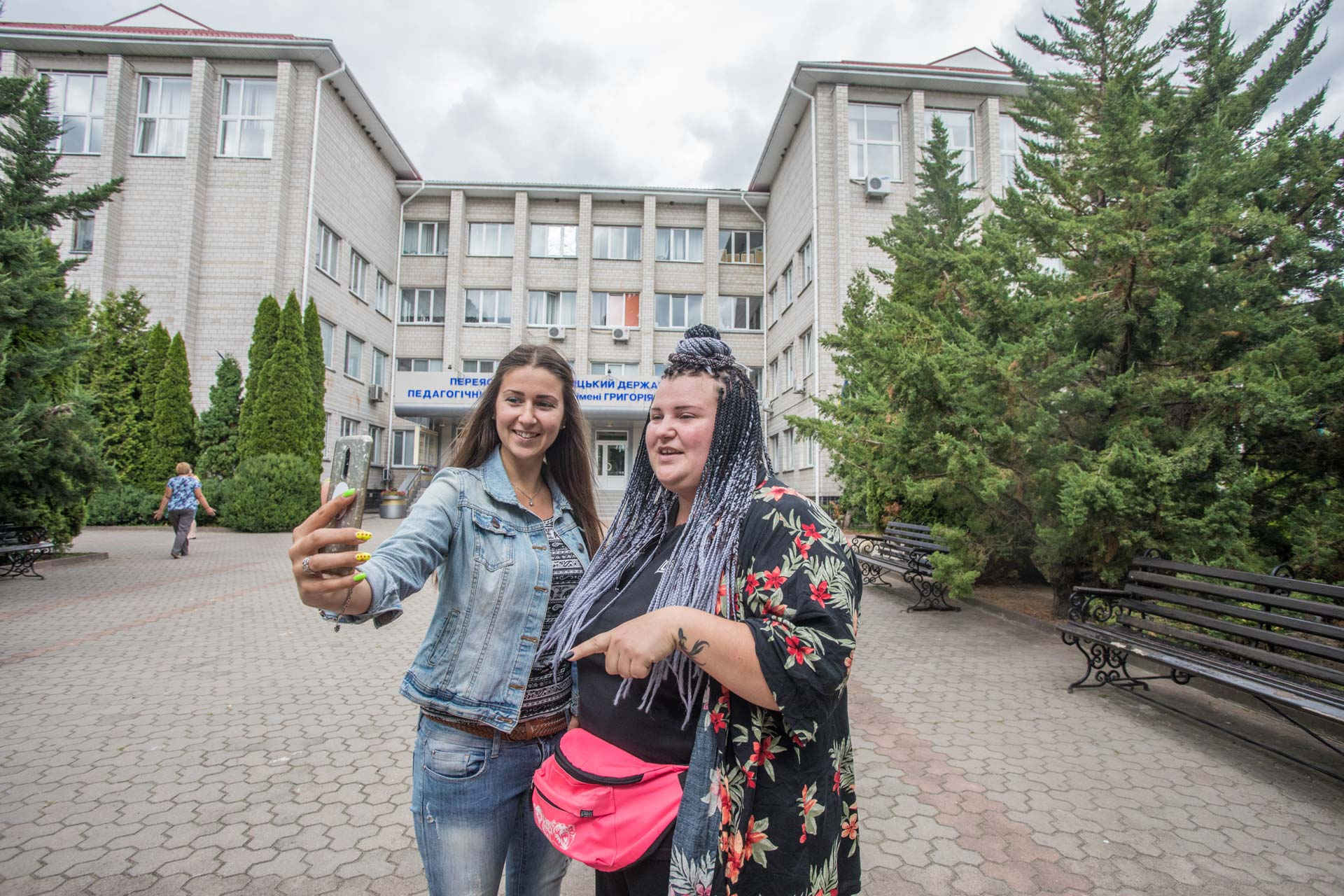
— I’ve been involved in social projects for the last six years. My friends and I set up a youth movement, six years ago we named it Jam Toloka, and today we have around 20 active residents — members of public organisations, who are leading this movement. Right now we’re organising a kind of hub, a coworking space for young people.
Pereyaslav-Khmelnytskyi’s music industry began to develop in response to the appearance of more and more local bands. One of these bands is The X-Rays, fronted by Oleksandr Maksymenko.
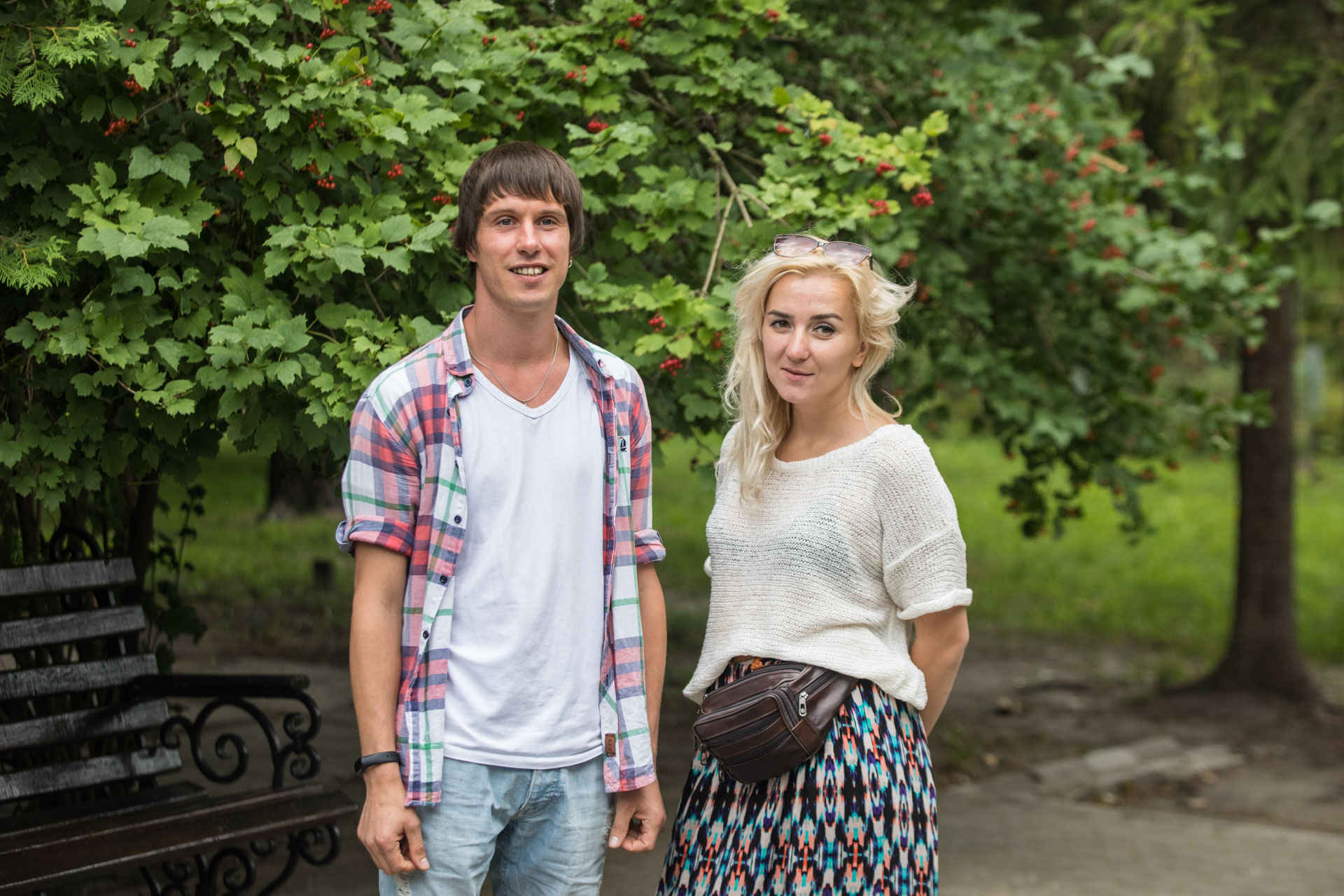
— This city really is an inspiration — it has a unique atmosphere that you can’t find in many places. In Pereyaslav you can keep on developing your creative potential, because the atmosphere inspires you to.
Alyona Alyona introduced us to someone she considers a true hero: Leonid Khmelkov, former serviceman of the 95th Zhytomyr Airborne Brigade. Wounded in the battle for Donetsk Airport, he has not lost his joie de vivre, and is adjusting to his new pace of life.
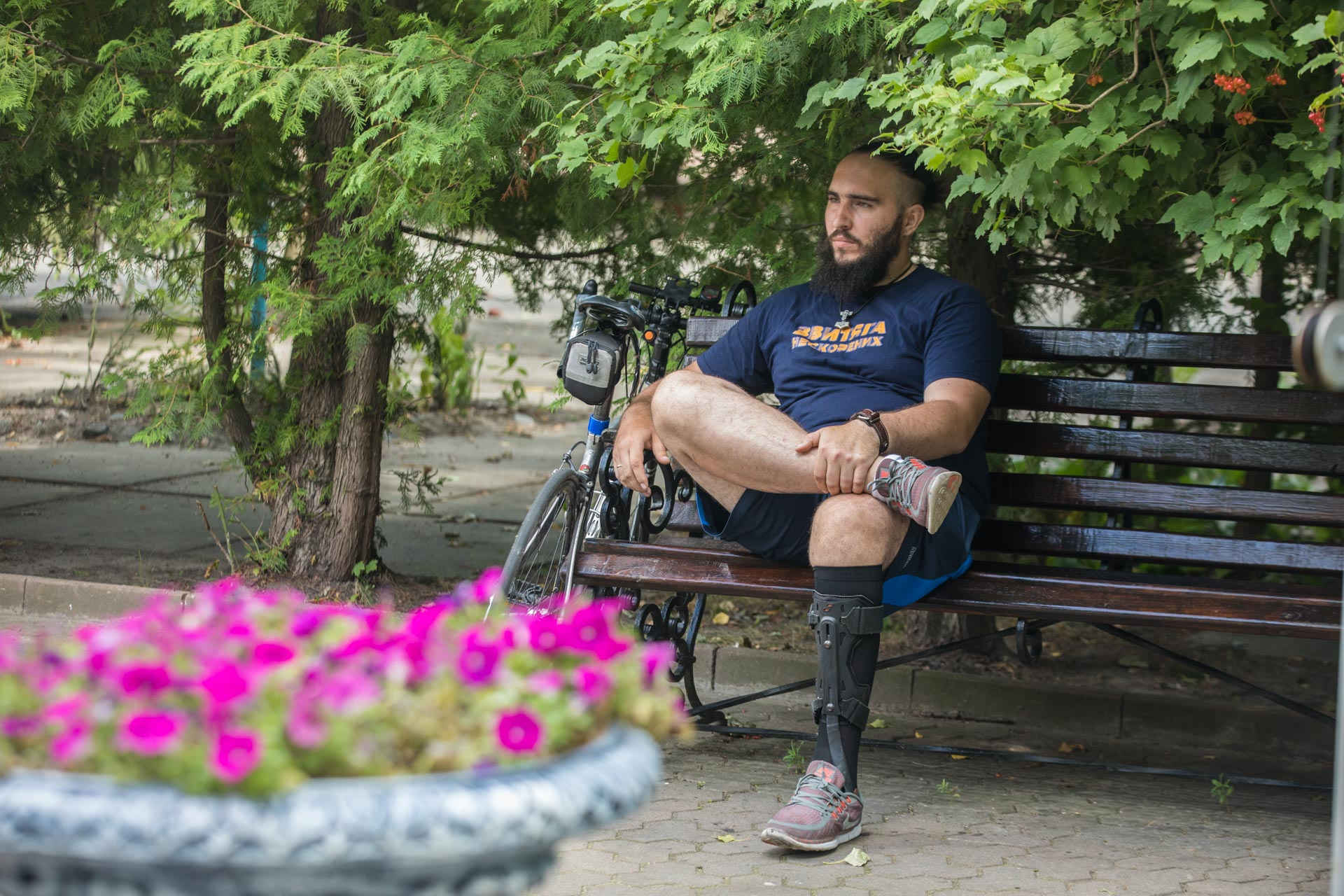
— Before the army, in university, I used to be a shot putter and an athlete. Now I’ve decided to go back to it, because — let’s just say I cheated a little. I already know how to do it, I’ve done it before. Of course you have to adapt, but everyone has to adapt in some way. I say let’s move everything we can, and do everything we can, because no one’s going to do anything for us!

